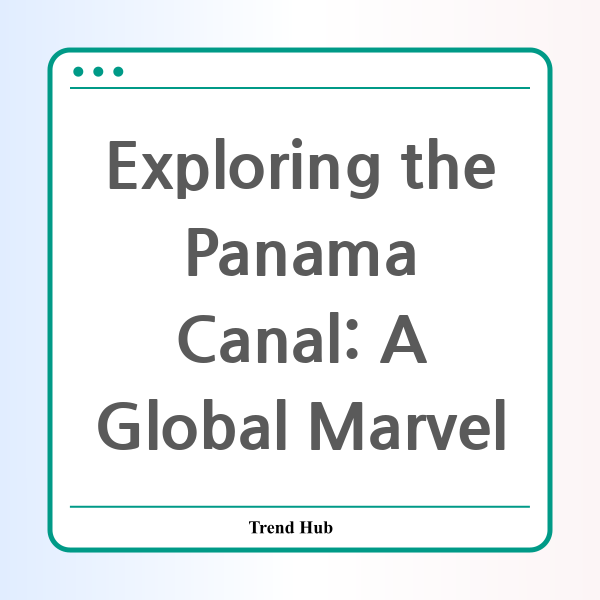* This website participates in the Amazon Affiliate Program and earns from qualifying purchases.

Have you ever wondered how a small country like Panama became a pivotal player in global trade? The answer lies in a remarkable feat of engineering: the Panama Canal. Often described as the "heart of the universe," this waterway has not only revolutionized maritime transportation but also reshaped international politics and economies since its inception.
Constructed in the early 20th century, the Panama Canal was a monumental project that involved the labor of thousands from 97 different nationalities. As Ana Elizabeth González, the executive director of the Panama Canal Museum, aptly puts it, "We’re the bridge of the world but also the heart of the universe." This small isthmus connecting the Atlantic and Pacific Oceans serves as a crucial artery for global trade, with about 5% of all maritime traffic passing through its waters.
Each year, approximately 40% of all U.S. containers utilize this route, underscoring its importance, especially for cargo traveling between the East Coast and Asia. Before the canal's opening in 1914, ships navigating between the two oceans were forced to circumvent the perilous Cape Horn, a journey that was both dangerous and time-consuming, often claiming thousands of lives.
Today, the canal features a lock system that accommodates vessels of varying sizes, including the now-common NeoPanamax ships, thanks to a significant expansion completed in 2016. This multibillion-dollar project underscored Panama's commitment to maintaining and enhancing this vital global asset.
Tourism to the Panama Canal has surged in recent years, with around 820,000 visitors flocking to witness its operations. Tourists can choose from various ways to experience this engineering marvel: by land, by water, or even from the air. The Miraflores Visitor Center, located just a short drive from Panama City, offers an educational and enjoyable visit, complete with an IMAX theater detailing the canal's fascinating history.
For those seeking adventure, boat tours on Gatún Lake allow for close-up views of the lush rainforest and the canal’s impressive infrastructure. Those with a penchant for hiking can explore the trails of nearby national parks, revealing the canal's role within the broader ecosystem.
However, the journey of the Panama Canal has not been without controversy. The canal's history is steeped in international tension, particularly concerning its sovereignty and the roles of both the United States and Panama throughout the 20th century. Following decades of control by the U.S., the canal was handed back to Panama at the turn of the millennium, a significant point in the nation’s history.
Despite concerns about the canal’s future amid climate change and reduced water levels—drought conditions have recently affected operations—the Panamanian government is actively seeking solutions. Projects aimed at water conservation and the construction of a new lake are underway to ensure the canal's longevity.
Visiting the Panama Canal is not just about witnessing the mechanics of shipping; it’s about experiencing the rich tapestry of history, culture, and engineering that defines this iconic waterway. For travelers looking to understand the true significance of the Panama Canal, it stands as a symbol of human ingenuity and a testament to the connectivity of our modern world.
In conclusion, the Panama Canal is more than just a shortcut for vessels; it embodies a complex narrative of progress, struggle, and resilience. As you plan your trip to Panama, consider making the canal a central part of your itinerary to fully appreciate its impact on global trade and its role as a national treasure.
* This website participates in the Amazon Affiliate Program and earns from qualifying purchases.